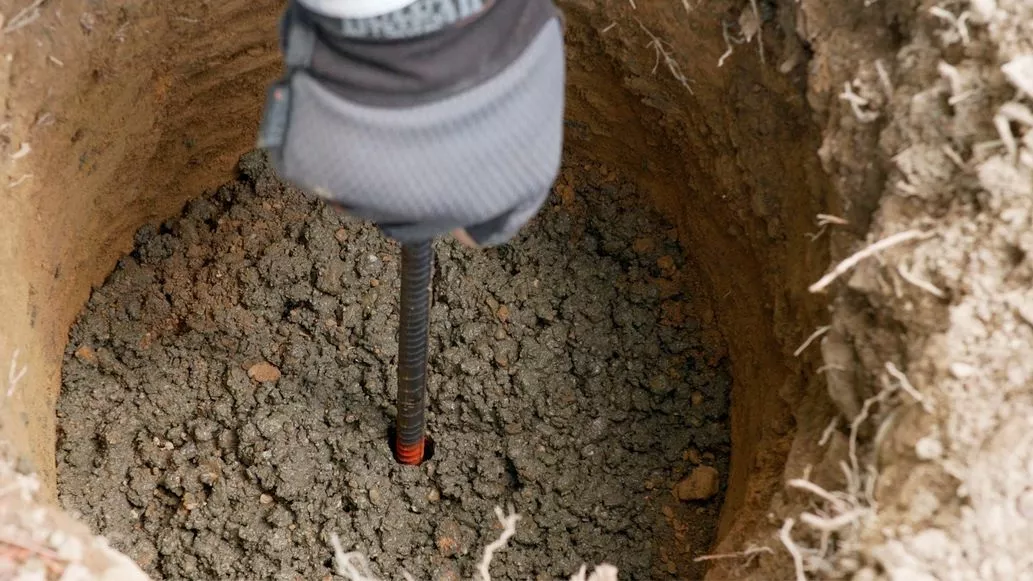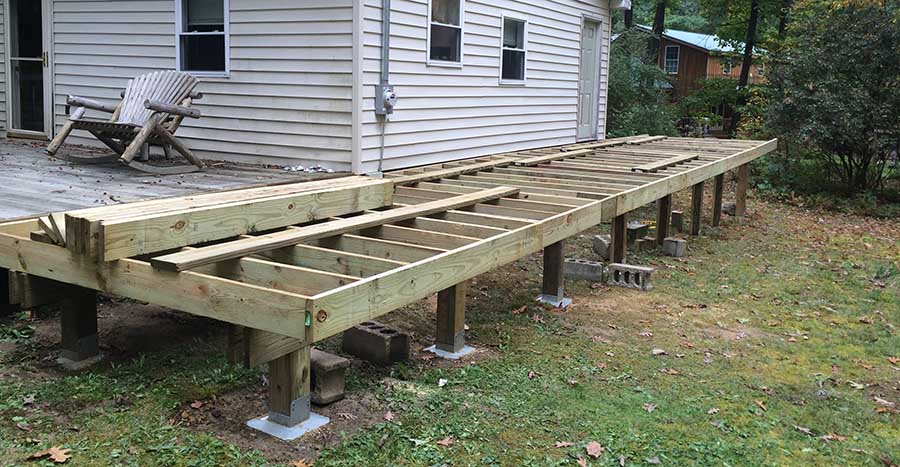Architectural Honesty Issues: Picking the Right Deck Footings for Your Outdoor Task
Wiki Article
Choosing the Right Deck Footings for Security and Durability
The durability and safety of your deck depend greatly on the kind of grounds you select, as they offer the important assistance and security to hold up against the test of time. In this conversation, we will certainly discover the various kinds of deck grounds, think about the crucial aspects to evaluate when making a decision, and dig into the pros and disadvantages of various alternatives.Kinds Of Deck Footings
These footings consist of a cylindrical opening filled up with concrete, which supplies a strong structure for the deck articles. Concrete pier grounds are fairly simple to install and supply outstanding security, making them a prominent selection for lots of deck jobs.These footings are installed by screwing them right into the ground, which develops a safe structure for the deck. They additionally permit for easy change and leveling of the deck if needed.
Conversely, some home builders decide for precast concrete grounds. These grounds are constructed from durable concrete and come in numerous forms and dimensions to accommodate different deck designs. Precast concrete grounds are convenient to mount and provide a stable base for the deck structure.
Lastly, an additional choice is the post-in-anchor footing system. This type of ground involves driving a metal support into the ground and attaching it to the deck message. It provides flexibility in regards to positioning the deck articles and appropriates for decks with light-weight frameworks.
When picking the ideal kind of deck ground, it is necessary to take into consideration variables such as soil conditions, deck tons, and regional building ordinance (Deck Footings). Consulting with a specialist contractor or architectural engineer can aid ensure the appropriate footing is selected for a risk-free and steady deck
Elements to Take Into Consideration When Choosing Footings
When choosing the suitable footings for a deck, it is vital to meticulously think about different variables such as dirt problems, deck lots, and adherence to local building ordinance. These variables play a considerable function in making certain the stability and durability of the deck framework.One of the key elements to consider is the dirt conditions. The sort of soil on which the deck will certainly be constructed establishes the type of grounds called for. Decks developed on sandy or loose dirts may call for deeper footings to give adequate support and avoid settling. On the other hand, decks developed on clay or expansive soils may require footings that can accommodate the dirt's tendency to expand and contract.
One more essential factor is the deck lots. The weight of the deck, including the products made use of and any potential live tons such as furniture or gatherings, need to be taken into consideration when picking footings. The grounds have to be created to bear the weight of the deck and distribute it uniformly to stop any kind of architectural issues or failures.
Lastly, adherence to local building regulations is vital. Building regulations vary from area to region, and it is important to adhere to the particular demands set by the local authorities. Deck Footings. These codes ensure that the deck is built safely and meets the required requirements for structural stability this and load-bearing ability
Concrete Footings: Pros and Cons

Concrete grounds supply several benefits and disadvantages when made use of as the foundation for a deck. On the favorable side, concrete grounds offer excellent stability and durability. Concrete is a inflexible and strong product that can support hefty lots and withstand different weather. It also has a lengthy life expectancy, making it a dependable choice for long-lasting usage.
Another benefit of concrete footings is their versatility. why not find out more They can be poured into different sizes and shapes to accommodate various deck styles and setups. Concrete footings can be personalized to fit the particular requirements and needs of the deck framework.
Nonetheless, there are also some disadvantages to utilizing concrete grounds. One significant downside is the cost and labor associated with their installation. Concrete footings require excavation and commonly require the aid of hefty equipment. This can enhance the total cost of the deck job and might call for professional help.

Helical Piers Vs. Sonotubes: Which Is Much better?
In taking into consideration the structure choices for a deck, the comparison between helical piers and sonotubes is vital in establishing the premium selection. They are turned right into the ground utilizing hydraulic machinery, supplying a long lasting and secure structure for the deck.When it involves stability and sturdiness, helical piers have the upper hand. The helical plates on the piers produce a strong hold with the soil, moving or protecting against any movement of the deck. This is specifically valuable in locations with unstable or changing dirt conditions. Sonotubes, on the various other hand, count exclusively on the concrete loading for stability, which may not offer the same degree of stamina and resistance.
In regards to setup, helical piers are fairly easier and faster to mount contrasted to sonotubes. The hydraulic equipment used to turn the piers right into the ground ensures a fast and reliable procedure. Sonotubes, on the other hand, call for excavating openings and putting concrete, which can be time-consuming and labor-intensive.
Furthermore, helical piers are an even more flexible choice. They can be made use of in numerous soil problems and can be readjusted or strengthened if required. Sonotubes, on the other hand, might call for added support, such as rebar, in certain soil conditions or locations with high lots requirements.
Selecting the Right Footings for Your Deck's Dimensions
For ideal architectural honesty, it is vital to carefully select the suitable grounds that straighten with the dimensions read review of your deck. The measurements of your deck, including its length, height, and width, play a significant role in figuring out the kind and size of grounds called for.When choosing footings for your deck, it is necessary to think about the load-bearing capacity of the soil. The weight of the deck, combined with the weight of any type of furnishings or individuals on it, exerts a significant pressure on the grounds (Deck Footings). It is essential to select footings that can sufficiently sustain this weight without changing or sinking over time.
Larger decks with better dimensions require bigger footings to give adequate stability and assistance. The form of the grounds, whether they are square or rounded, depends on the design and format of the deck.
Conclusion
In conclusion, picking the ideal deck grounds is crucial for making certain stability and toughness. Factors such as the type of footings, the deck's measurements, and the pros and disadvantages of various options must be taken into consideration.These footings are composed of a round hole loaded with concrete, which supplies a strong foundation for the deck articles. Concrete pier footings are fairly very easy to set up and supply outstanding security, making them a preferred option for several deck jobs.
Precast concrete footings are hassle-free to install and supply a steady base for the deck framework.
It provides flexibility in terms of positioning the deck blog posts and is suitable for decks with light-weight frameworks.
Concrete grounds provide a number of advantages and drawbacks when used as the foundation for a deck.
Report this wiki page